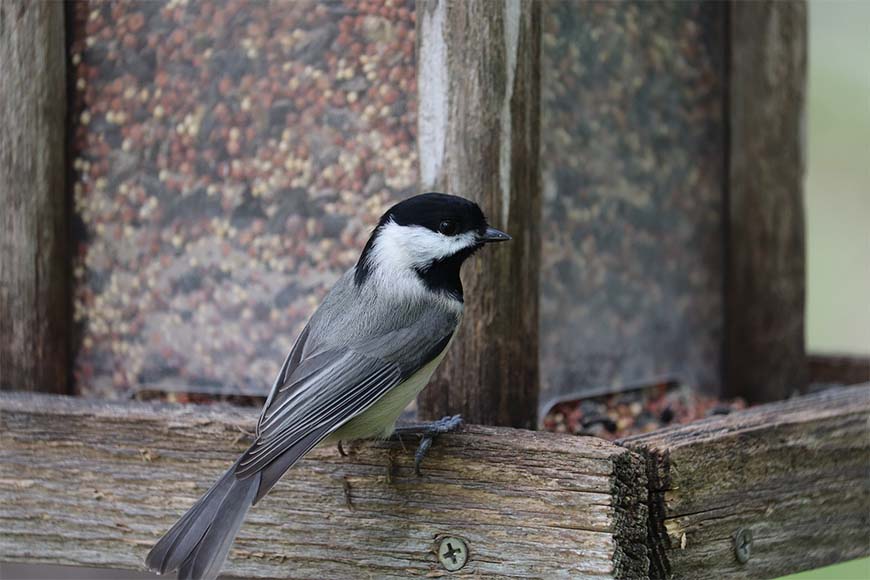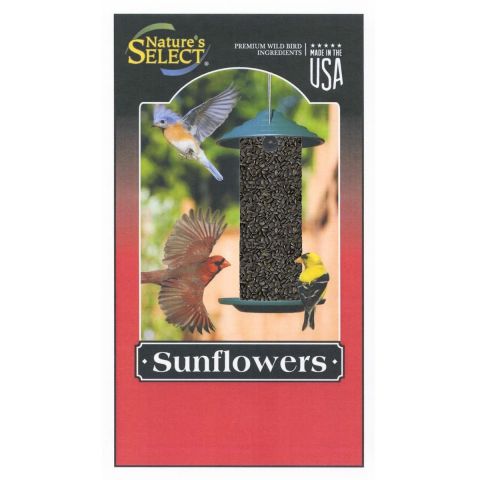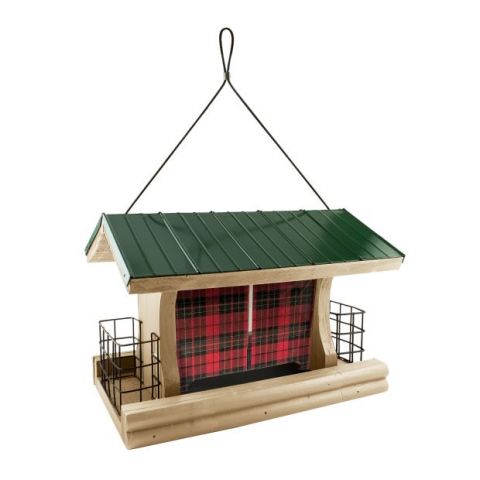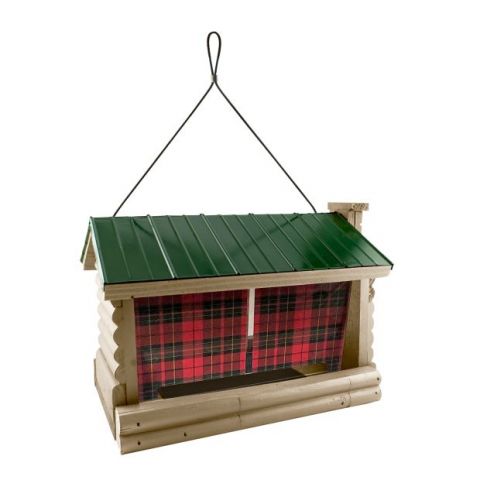
Chickadees are one of America's favorite birds.
Chickadees have to be one of the most recognizable backyard birds across the United States. This little bird, often seen in forests, fields, along roadways, and backyards. Chickadees are a balance of acrobatic, energetic, and often friendly delights to have around. They can often become tame enough to take seeds from your open hands.
The Chickadee is not the most vibrant colored bird in the states, but what they lack in colors they make up in spirit and sound. Chickadees are fun little birds that will show up every day to your feeders if they are kept full.
These birds are so friendly with humans, usually being unbothered by human presence. Don’t be surprised that with a bit of patience and some black oil sunflower seeds, you will be able to feed them by hand, especially during the winter months.
North American Chickadee conservation:
All chickadees are apart of the Paridae family, which includes: chickadees, tits, and titmice. The Chickadees have been classified into the genus Poecile. Out of the seven species found across North America only the Mountain Chickadee (Poecile cinctus) is found outside of North America.
Of the North American Chickadees, only the Chestnut-backed Chickadee has been of conservation concerns, as habitat loss has brought down breeding populations. The best way to combat this decline is one, to establish a forest habitat in which dead standing wood remains, and two, to place Chickadee birdhouses on your property or work with local groups to have them established in school zones, and other public properties.
Identification:
Most familiar and known by bird watchers is the black-capped Chickadee, which is hard to miss and easily recognizable by their black cap as well as black neck just under the beak. In North America, there is a bit of variation among the different species of Chickadees, such as the Chestnut-backed Chickadee has a brown cap, compared to the black of other species.
A chickadees belly ranges from a dusty white to an almost rust-colored underside. In all, Chickadees are under 6 inches in length. The Chickadees share a short beak, narrow tail, along with a large head compared to their bodies makes them one of the smallest birds.
Black-Capped Chickadees are most notably known for their calls which are heard as chick-a-dee-de-dee, while they flutter around in groups, in and out of feeders, taking turns. Other species calls are very similar to the Black-capped Chickadees call. Those calls range in some form close to that of the Black-capped Chickadee.
Chickadee Range and habitat:
The most well-known of the Chickadees is the Black-Capped Chickadee (Poecile atricapillus). Black-Capped Chickadees range across most of the northern part of the Americas. Black-capped Chickadees range from, the coasts of Alaska down to Oregon across the Plaines through Missouri, and up into Nova Scotia, Canada.
The other six Chickadee species found in North America are:
- Boreal Chickadee (Poecile hudsonicus)- Found in the most northern parts of the USA and throughout Canada.
- Chestnut-backed Chickadee (Poecile rufescens)- Found along the west coast from the bay area to Alaska.
- Gray-headed Chickadee (Poecile cinctus)- Found in the remote area of northern Alaska, Canada, and Northern Asia.
- Mountain Chickadee (Poecile gambeli)- Found in Rocky and Sierra Mountain ranges from the southern USA to Canada.
- Carolina Chickadee (Poecile carolinensis)- Found in the southeastern United States.
- Mexican Chickadee (Poecile sclateri)- Found from the Arizona Sky Islands and down Mexican west coast.
Chickadees do not migrate during the year, except short distances, so you are bound to find them year-round if you give them ample food, especially black oil sunflower seeds.
Chickadee Diet:
Black oil sunflower seeds are one of the Chickadee's favorite seed of choice. However, a large part of their diet comes from the Chickadees time spent finding insects, eggs, and larvae. Even during the winter, they can search out frozen insects among tree bark and other locations.
During the winter months, it is a great option to supplement mealworms into their backyard feeders. Mealworms help support their health by providing fats and proteins during the cold and snow-covered months.
You will see Chickadees quickly taking turns at bird feeders, taking a seed and flying back to a tree to perch and eat. Chickadees are birds that store and hide food also known as a cache. So, you will see them flying off to a nearby tree tucking seeds into any spots they can.
A Chickadee is not going to be picky about what type of feeder you put out, once they know it’s there you will have daily guests. Using feeders that incorporate a cage around a tube feeder can help deter bigger birds and squirrels. A hopper feeder is a great addition for easy access to adding different seeds and treats during the year, as well as one the best for viewing purposes.
Chickadees favorite birdseed
- Black Sunflower Seed
- Stripe Sunflower seed
- Sunflower hearts
- Peanut kernels
- Peanut hearts
- safflower
- mealworm
Chickadee Nesting Habits:
Chickadees are cavity nesters, often using old woodpecker holes or excavating tiny ones themselves. You can also provide them with properly constructed nest boxes to help attract them to nest in your yard, or by keeping standing deadwood for them to build their nesting sites.
The nesting period is usually from April to June. During the winter the chickadees gather into larger groups of about 12 birds. These groups break apart just before mating season begins and pairs start to find nesting sites.
When choosing a nest box, or building one for Chickadees look for a box with a 1 1/8-inch diameter opening. That is just large enough for a chickadee to fit through. Chickadees also like to have enough space inside the box, might be a little bird, but look for at least 4- inches by 4- inches of floor space, with a height between 8-10 inches in the birdhouse.
Support this box in or near the woods between 4 and 15 feet high. Chickadees want to feel sheltered and safe from predators. Also, don’t forget to get them started with some wood shavings.
Chickadee Brooding Habits:
Chickadees do not have any sort of elaborate mating rituals like many other birds. They will usually select a mate in late winter after feeding groups break apart and begin nesting in April.
You can place different nesting materials such as animal hairs, or soft cotton bits. There are also nesting kits available to hang near the birdhouse that they can come and harvest materials from.
The female will lay up to 6 speckled eggs, and she alone will incubate them for 12 days. During this time the male is responsible to find and feed the female. After hatching, it is another 16 days until the baby chickadees are ready to fledge the nest.
A pair of chickadees will hatch 1 – 2 broods a season, the latter is more likely when resources are high and predator threat is low, so keep the feeder full, water stations clean, and a safe and properly constructed chickadee house.
Tips for attracting chickadees:
- Learn about the Chickadees that reside in your area, this will help you identify them and give you a good understanding of that induvial species habits.
- During the Winter months provide heated birdbaths. Chickadees do not migrate, and with all animals, water is a must. Because of the bird’s small size make sure that the birdbath is not too deep. If this is the case, river rock or any dish that will provide a shallow basin for the Chickadees.
- By providing the chickadees with plenty of fresh and clean birdseed they are bound to make your yard a stop on their daily rounds. Chickadees love black oil sunflower seeds. Providing plenty of sunflower hearts is also an easy option and will leave less waste in your yard.
- Give the chickadees nesting materials or a nesting box, encouraging them to stay and have a place to brood their young and feel safe from predators.




